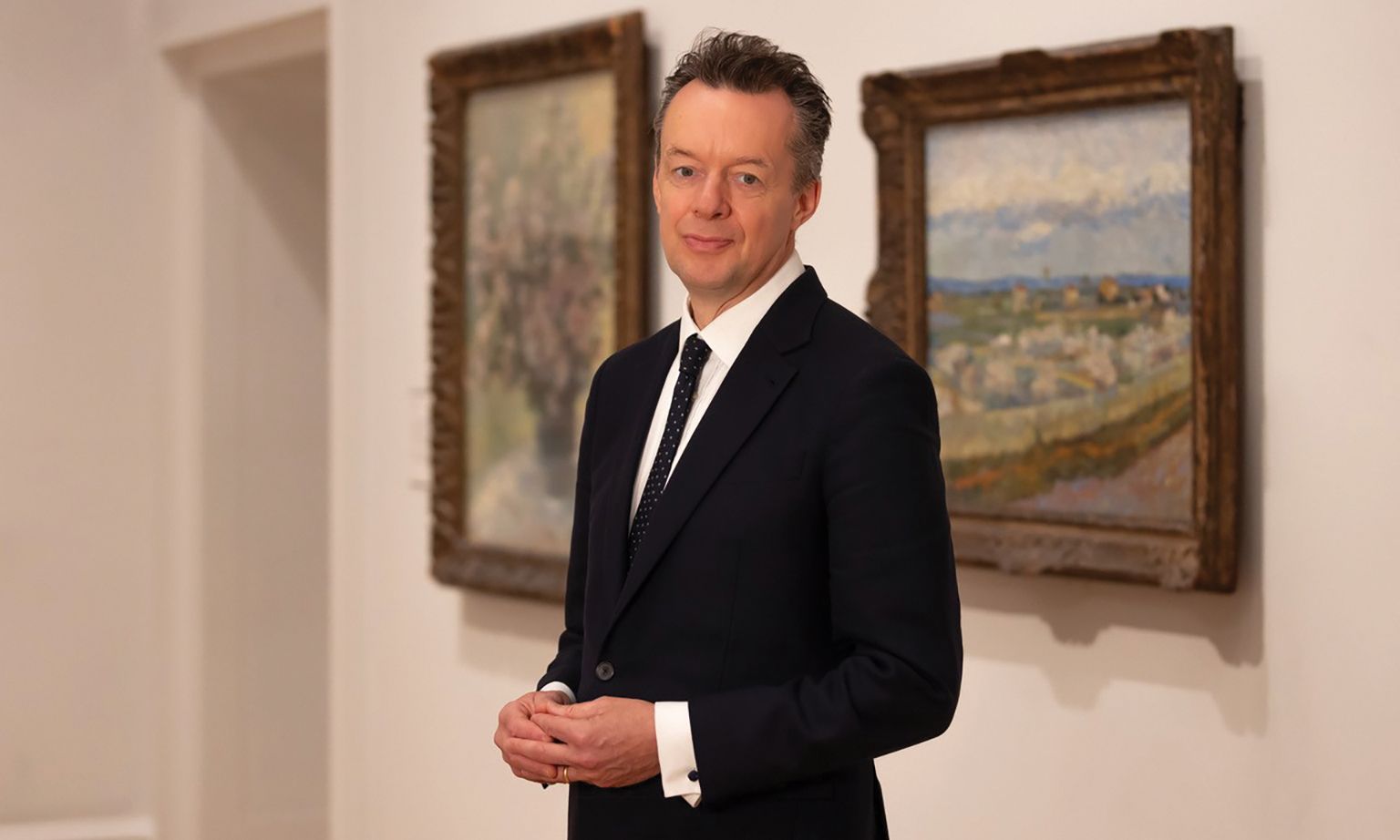Mark Hallett, the director of London’s Courtauld Institute
Courtesy of the Courtauld
Mark Hallett, the new director of London’s Courtauld Institute, faces a serious challenge: to diversify its student body. It may come as a surprise to those outside academia, but 82% of the Courtauld’s Bachelor of Arts (BA) students are female. Students also tend to come from wealthier backgrounds, reflecting the fact that only 21 state schools in the UK teach A-level art history, although 80 fee-charging schools do. And UK Black, Asian and Minority Ethnic students at the Courtauld still represent just 12% of the total.
Hallett’s other key task is to raise £50m for the refurbishment of the academic wing of the Courtauld’s premises at Somerset House, off the Strand. Students had to vacate the building at the end of 2018 to allow work to proceed. They temporarily decamped to a building at Vernon Square, near King’s Cross. Hallett now admits that a delay in the refurbishment will mean that students will not be able to return to Somerset House until September 2027.
Deborah Swallow retired as director last summer, after 18 years in the post. She was widely respected, but after such a length of time her successor is bound to come with fresh ideas. Hallett, previously head of Yale University’s London-based Paul Mellon Centre for Studies in British Art, took over in August. He now heads the UK’s leading art history college—with 270 BA students, 230 Master of Arts (MA) students and 80 PhD students.
Somerset House, where the Courtauld Institute’s academic wing is to undergo a £50m refurbishment www.bikeworldtravel.com/Sung Kuk Kim
Hallett follows in the footsteps of Anthony Blunt, the Courtauld’s most famous director. Blunt held the post from 1947 to 1974. In 1964, while still heading the Courtauld, he privately confessed to the UK authorities that he had spied for the Soviet Union from the 1930s to 1950s. Subsequent directors have been Peter Lasco, Michael Kauffmann, Eric Fernie, James Cuno and finally Swallow.
“I am determined to open up the Courtauld to a much broader range of students,” Hallett said in an interview with The Art Newspaper. He is challenging the perception of art history as being “narrow, elitist and exclusive”. Hallett wants many of the courses to be “more vocational”, equipping students with skills “to succeed in the art world, to be creatively entrepreneurial”. He points to fields such as conservation, curating and art law.
As part of his diversification programme, Hallett intends to widen the curriculum still further beyond European and American art (which now account for around two-thirds of the teaching). For example, he points to the importance of offering courses on Latin American and Japanese art, although he would not want to weaken the Courtauld’s traditional strengths.
Brexit had what Hallett describes as a “horrendous” impact on the Courtauld. Before then it welcomed a large contingent of European Union students, but fees subsequently increased greatly, making the UK unattractive for those from Europe. Hallett also admits that Brexit resulted in a negative perception that the UK is not “welcoming”. Post-Brexit, the largest number of the Courtauld’s international students come from the US. Of the MA and PhD students, 40% are now from abroad, although the proportion is smaller for undergraduates.
The public face of the Courtauld is its gallery, with its great collection of Old Masters and Impressionists based on donations by Samuel Courtauld, who died in 1947. The gallery’s Somerset House rooms reopened in 2021 after a period of refurbishment.
Last year the Courtauld Gallery welcomed 340,000 visitors, compared with 181,000 in 2018, the year before the closure. Hallett hopes to maintain that number, although this may prove a challenge because crowds came after the much-publicised reopening and high-profile exhibitions on Vincent van Gogh and Edvard Munch. Along with the permanent collection, Hallett promises three main shows a year, plus changing displays in several smaller spaces, to provide constant variety for repeat visitors.
Hallett is keen to work with neighbouring institutions on the Strand to develop the area as a cultural hub. He points to the other parts of Somerset House (which host exhibitions and events), the adjacent King’s College London (with which the Courtauld formed an academic partnership last year) and the nearby 180 Strand project (a creative cultural centre). This year’s completion of the pedestrianisation of the eastern end of the Strand has made it a much more welcoming area.
With the £57m that was raised for the refurbishment of the gallery and the anticipated £50m for the academic institute, the total costs of the project (dubbed Courtauld Connects) add up to more than £100m. The work is being overseen by the architecture firm Witherford Watson Mann.
Hallett says that, following the successful completion of the gallery refurbishment, the Courtauld is now in “the quiet phase of fundraising” for the academic institute, as a prelude to a more public campaign. Two of the key improvements in the academic accommodation will be a transformed library and a more suitable main lecture theatre.
Fundraising for the arts meanwhile remains a challenge: Covid-19 made the situation more difficult, while some potential Russian donors have been ruled out by the invasion of Ukraine and oil money is highly controversial (earlier this month the British Museum announced a £50m sponsorship agreement with BP).
The Courtauld is nearly a third of the way to raising the £50m to complete the refurbishment of the academic wing Somerset House, but any problems in raising the remainder will mean that the return of students may be delayed beyond 2027, causing them to lose out on much-improved facilities and easy access to one of London’s finest collections.
Hallett also sees the Courtauld as having a wider responsibility. He is determined to raise the public profile of art history: “We are not going to whisper in hushed tones about its importance, we are going to shout about it.”

